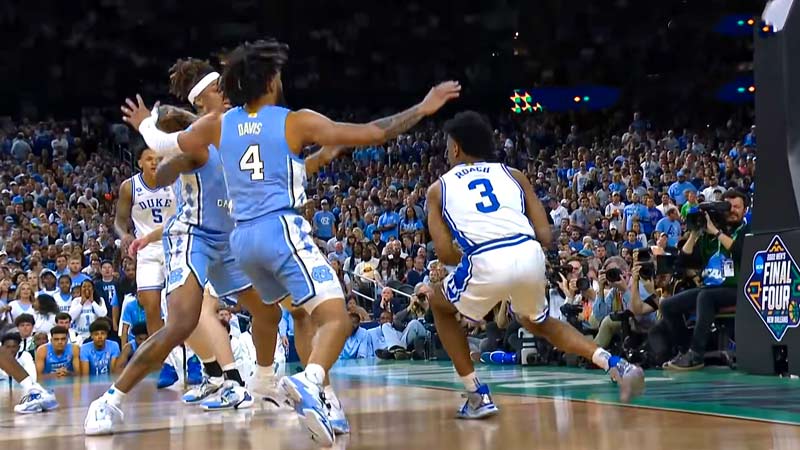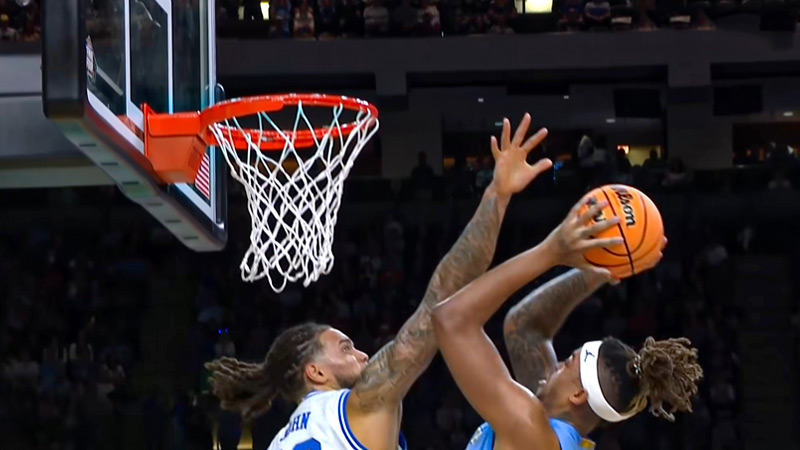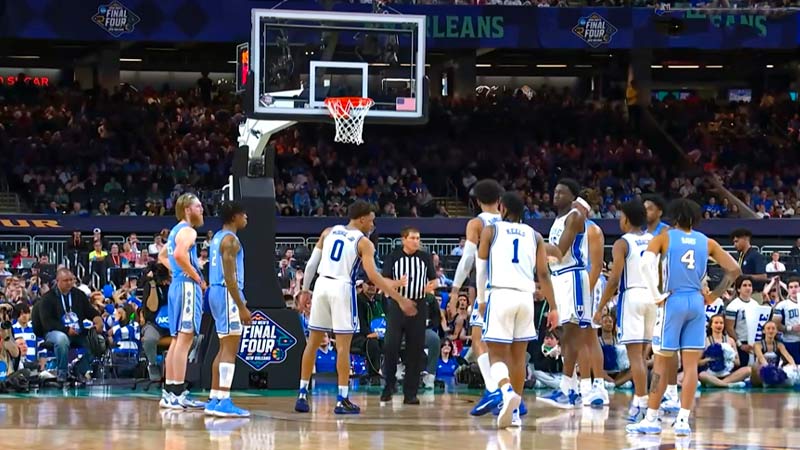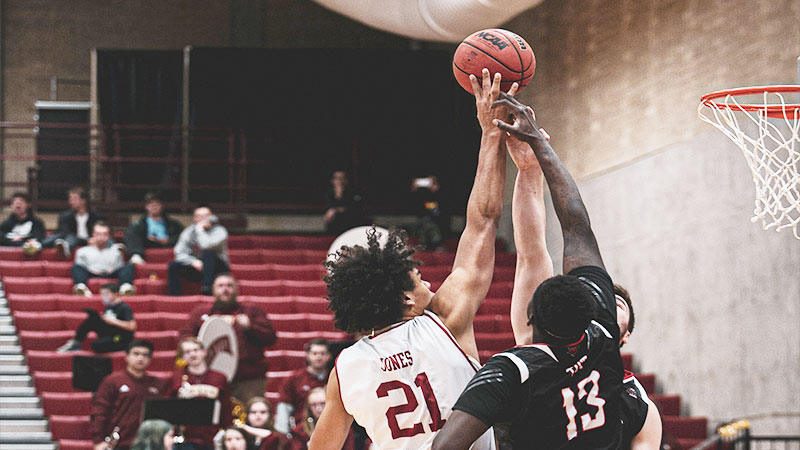Basketball is a captivating sport that garners immense popularity worldwide. From the local neighborhood courts to the grand arenas, the passion for the game is undeniable.
Within the realm of college basketball, the term “D1” holds significant importance. Still, there are many of us who don’t know about this term properly. But it is very essential to have a clear idea of what is D1 in basketball.
In this article, we will delve into the concept of D1 in basketball, exploring its origins, significance, and impact on the sport.
What is D1 in Basketball?
D1 in basketball refers to the highest level of competition within the college basketball system in the United States.
It represents the pinnacle of intercollegiate athletics, showcasing the most talented athletes, fierce competition, and the highest level of exposure for players and teams. The term “D1” is often used as a shorthand for NCAA Division 1 basketball.
The D1 basketball team refers to the men’s and women’s basketball teams that compete at the Division 1 level. These teams are typically affiliated with universities and colleges that have substantial resources, funding, and support dedicated to their athletic programs.
The teams compete against each other in a highly competitive environment, aiming to qualify for postseason tournaments and make a name for themselves in the college basketball landscape.
D1 basketball teams feature some of the most skilled and promising players in the country. The athletes who make up these teams have often excelled in their high school careers, attracting the attention of college recruiters and earning scholarships to play at the D1 level.
The level of play in D1 basketball is intense, featuring fast-paced games, strategic play-calling, and a high level of athleticism.
The teams within the D1 basketball system are part of the larger National Collegiate Athletic Association (NCAA) organization, which governs intercollegiate sports across the United States.
The NCAA is divided into three divisions: Division 1, Division 2, and Division 3. Each division has its own set of rules, regulations, and eligibility requirements.
What Is NCAA Division 1?

NCAA Division 1 is the highest level of competition within the NCAA’s three-tiered system. It encompasses universities and colleges with the largest athletic programs, resources, and budgets.
D1 schools are known for their commitment to excellence in sports, including basketball, and they often receive significant attention and media coverage.
Division 1 schools are typically larger institutions with a strong emphasis on athletics. They attract talented student-athletes from around the country and provide them with opportunities to excel both academically and athletically.
D1 programs have a dedicated coaching staff, state-of-the-art facilities, and access to top-notch training resources, all aimed at developing the potential of their athletes.
In NCAA Division 1 basketball, teams compete in conferences, which consist of a group of schools that schedule regular-season games against each other.
These conferences vary in size and competitiveness, with some conferences having a long-standing tradition of success and others being more up-and-coming.
Throughout the regular season, teams compete against conference opponents as well as non-conference opponents from other conferences.
The ultimate goal for D1 basketball teams is to qualify for postseason tournaments, such as the NCAA Tournament, where the best teams in the country vie for the national championship.
NCAA Division 1 basketball has a massive following, with fans eagerly supporting their favorite teams and players.
The level of competition, combined with the passion of the fans, creates an electric atmosphere during games, whether it’s on-campus arenas or iconic venues that host marquee matchups.
For sure, D1 in basketball represents the highest level of competition within the college basketball system. The D1 basketball teams, affiliated with NCAA Division 1 schools, showcase exceptional talent, intense competition, and a commitment to excellence.
It is within this highly competitive environment that some of the most memorable moments in college basketball history have taken place.
What are the Differences Between D1, D2, and D3?

D1, D2, and D3 are three distinct divisions within the National Collegiate Athletic Association (NCAA) that categorize member institutions based on the scale of their athletic programs and resources.
While all divisions offer opportunities for student-athletes to compete in intercollegiate sports, there are significant differences between D1, D2, and D3 in terms of scholarship opportunities, funding, eligibility requirements, and overall level of competition. In this section, we will explore these differences in detail.
Scholarship Opportunities
One of the primary distinctions between the divisions lies in the availability of athletic scholarships.
D1 schools have the highest number of scholarships available, providing financial assistance to student-athletes based on their athletic abilities. These scholarships can cover tuition, room and board, and other expenses, easing the financial burden on the athletes.
D2 schools also offer athletic scholarships but in smaller numbers compared to D1. D3 schools, however, do not offer athletic scholarships. Instead, student-athletes at D3 institutions can receive academic scholarships or need-based financial aid.
Funding and Resources
D1 programs typically have the largest budgets and resources allocated to their athletic departments. These schools often have state-of-the-art facilities, training equipment, and dedicated coaching staff.
The funding for D1 programs primarily comes from television contracts, sponsorships, ticket sales, and alumni donations. D2 schools have smaller budgets and fewer resources compared to D1, but they still invest in their athletic programs.
D3 schools have the least amount of funding for athletics, as the focus is primarily on academics. The facilities and resources at D3 institutions are generally more modest.
Eligibility Requirements

Eligibility requirements differ across the divisions, particularly in terms of academic standards and amateurism rules.
To be eligible to compete in D1, student-athletes must meet certain academic benchmarks, including a minimum GPA in high school coursework and a specific score on standardized tests like the SAT or ACT. Additionally, the NCAA has a set of amateurism rules that D1 athletes must adhere to in order to maintain eligibility.
D2 and D3 divisions have their own academic and amateurism requirements, but they are generally less stringent than those of D1. D3, in particular, places a strong emphasis on the student-athlete balance, ensuring that athletes are primarily focused on their academic pursuits.
Level of Competition
The level of competition varies significantly among the divisions. D1 is widely regarded as the most competitive and highest level of college athletics.
D1 teams often compete against each other in high-profile conferences and have the opportunity to participate in prestigious postseason tournaments, such as the NCAA Tournament. The level of athleticism, skill, and talent on display in D1 is often unmatched. D2 also offers a high level of competition, albeit with slightly fewer resources and media attention.
D2 teams compete in their own conferences and postseason tournaments. D3, while still competitive, generally has a lower level of competition compared to D1 and D2. The emphasis in D3 is on participation, personal development, and the integration of athletics with the overall college experience.
Time Commitment and Schedule
The time commitment and schedule for student-athletes can vary across divisions. D1 athletes often have a demanding schedule, with rigorous training sessions, extensive travel for games, and a significant time commitment to their sport.
The competition and expectations in D1 require athletes to dedicate a substantial amount of time and effort to their athletic pursuits.
D2 athletes also have a significant time commitment, although it may be slightly less demanding compared to D1. D3 athletes generally have a more balanced schedule, with a greater emphasis on academics and a reduced time commitment for athletics.
Opportunities for Advancement
While D1 receives the most media attention and offers the highest level of competition, opportunities for advancement to the professional level exist across all divisions. Many professional athletes have emerged from D1 programs due to the increased exposure and talent pool.
However, talented players from D2 and even D3 schools have also made their mark in professional sports. The key is to showcase exceptional skills and performance, regardless of the division.
Generally, D1, D2, and D3 are distinct divisions within the NCAA that differ in terms of scholarship opportunities, funding, eligibility requirements, level of competition, time commitment, and opportunities for advancement.
D1 represents the highest level of competition, offering the most resources and scholarships, while D2 and D3 provide alternative pathways for student-athletes to compete in intercollegiate sports while balancing their academic pursuits.
Each division has its own unique characteristics and provides valuable experiences for student-athletes, contributing to the rich tapestry of collegiate athletics.
List of the NBA Players from D1 Schools
| Player | D1 School |
| Michael Jordan | University of North Carolina |
| Magic Johnson | Michigan State University |
| Larry Bird | Indiana State University |
| Kareem Abdul-Jabbar | University of California, Los Angeles |
| Shaquille O’Neal | Louisiana State University |
| Tim Duncan | Wake Forest University |
| LeBron James | St. Vincent-St. Mary High School (Ohio) |
| Kobe Bryant | Lower Merion High School (Pennsylvania) |
| Kevin Durant | University of Texas at Austin |
| Stephen Curry | Davidson College |
FAQs
What does it mean to be a D1 basketball player?
Being a D1 basketball player means competing at the highest level of intercollegiate athletics, representing a university or college that invests significant resources in its athletic program.
How are D1 schools different from D2 and D3 schools?
D1 schools generally offer more athletic scholarships, have larger budgets, and compete in more prestigious conferences compared to D2 and D3 schools.
Can D2 or D3 players transition to the NBA?
While it is rarer, players from D2 and D3 schools have made it to the NBA. However, the majority of NBA players come from D1 programs due to the increased exposure and competition.
Are all D1 basketball programs equal in terms of success?
No, D1 basketball programs vary in terms of success, resources, and prestige. Some programs have a rich history and consistently compete at the highest level, while others are still building their reputation.
How are D1 basketball teams selected for postseason tournaments?
Selection for postseason tournaments, such as the NCAA Tournament, is based on various factors, including team records, conference championships, and selection committee decisions.
Bottom Line
D1 basketball represents the epitome of collegiate competition, attracting passionate fans and producing extraordinary talent. The division’s status, resources, and level of competition distinguish it from lower divisions.
As we explore the realm of D1 basketball, we come to appreciate its significance in shaping the sport’s history and fueling the dreams of aspiring athletes.
Whether it be witnessing powerhouse programs dominate the court or seeing emerging players make their mark, D1 basketball continues to captivate the hearts and minds of basketball enthusiasts worldwide, solidifying its place as a pinnacle of athletic achievement.







